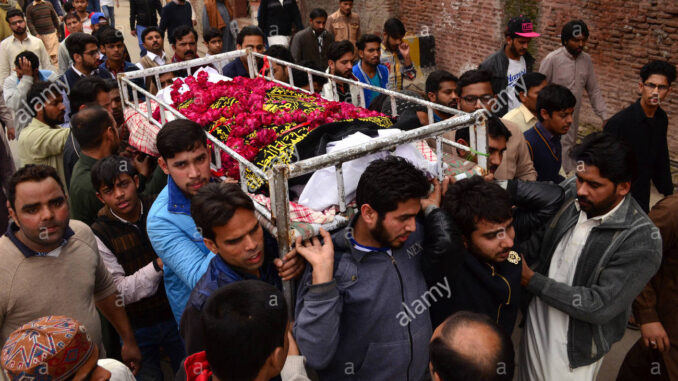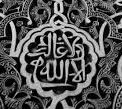
I unfortunately lost an acquaintance recently to COVID-19, and despite some trepidation I decided to attend the funeral out of respect for the deceased. Standing at the well-ordered suburban cemetery reminded me about how different death is here versus where I grew up.
In the US, death is sanitized. Funerals are quiet and largely private affairs. Seldom can you find anyone wailing, clawing their face, or fainting. The dead themselves are either hidden inside caskets or lie solemnly in a formal dress. Mostly adults are present, with only a handful of children.
What a contrast to the funerals in Pakistan. Even as a child, I found death omnipresent – and it made a huge impression on me. A death in the neighborhood would lead to a street closed off, with family and friends setting up tents for sitting arrangements, chairs or carpets for the mourners on the floor. As people would take off their shoes and walk in, the piles of shoes keep getting bigger.
When it would be time for the funeral, the street filled with the mourners carrying the charpoye (a wooden open cot borrowed from the Mosque) on their shoulders to the nearby mosque for Namaz-e- Janaza. Traffic slowed for funeral processions (a common obstacle for drivers) as hundreds of people went on foot to carry the deceased to his/her final destination. The leader of the procession recited the kalima-e shahada and the rest echoed it. Even though the body of the dead person was covered in a white shroud, we could easily figure out their body shape and weight.
I saw so many dead bodies as a child, both old and young. Sometimes the head of the body was bandaged, the nostrils stuffed with cotton balls, or the toes tied together. A mass of flower petals around the body did little to assuage my terror when looking at the corpses.
My grandmother’s death affected me the most. I was 15 at the time. She and I had been very close. I was named after her and I used to sleep next to her. So when I saw her dead body for the first time, lying on the bed we used to share together, I was shaken to my core. It did not help that as I leaned to hug her, I felt what I later learned were post-mortem spasms. At the time, I felt she might have been still alive.
And then there were all the stories about what goes on inside a grave, including the travails of the first night inside the grave. The angels who supposedly interrogate you about your past deeds, even though they know exactly what you did and when, as if they just want to see you try to contradict yourself, not unlike a KGB interrogator. These angels had the power to punish the wrongdoers with all sorts of terrifying punishments (some involved snakes, others an immense pressure that crushed bones). For some reason, details about the rewards for good deeds were always left out in the stories we were taught. There seemed to be no respite for the dead –and these horrifying tales hardly left the living off the hook either.
Some of that terror still lives with me, though it has mostly subsided. My mother, on the other hand, has a lot of trouble with it, because she believes whatever she hears or reads. And death seems much closer for her. I guess that explains the strong pull of tradition over her right now. The more afraid you are of death, the more likely you will be to take the sermons seriously, and vice versa.
I am glad that my own kids growing up in America do not have to undergo the kind of trauma I experienced around death. Though if I’m honest, I have to admit that I am not sure how I feel about them being so inexperienced with anything involving what is after all an essential part of life. Can there be an attitude to death that neither traumatizes nor whitewashes its stark reality?
On that happy note, I wish everyone an Allah hafiz.
